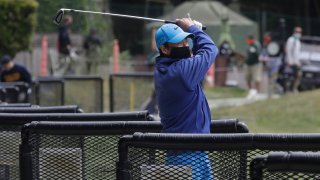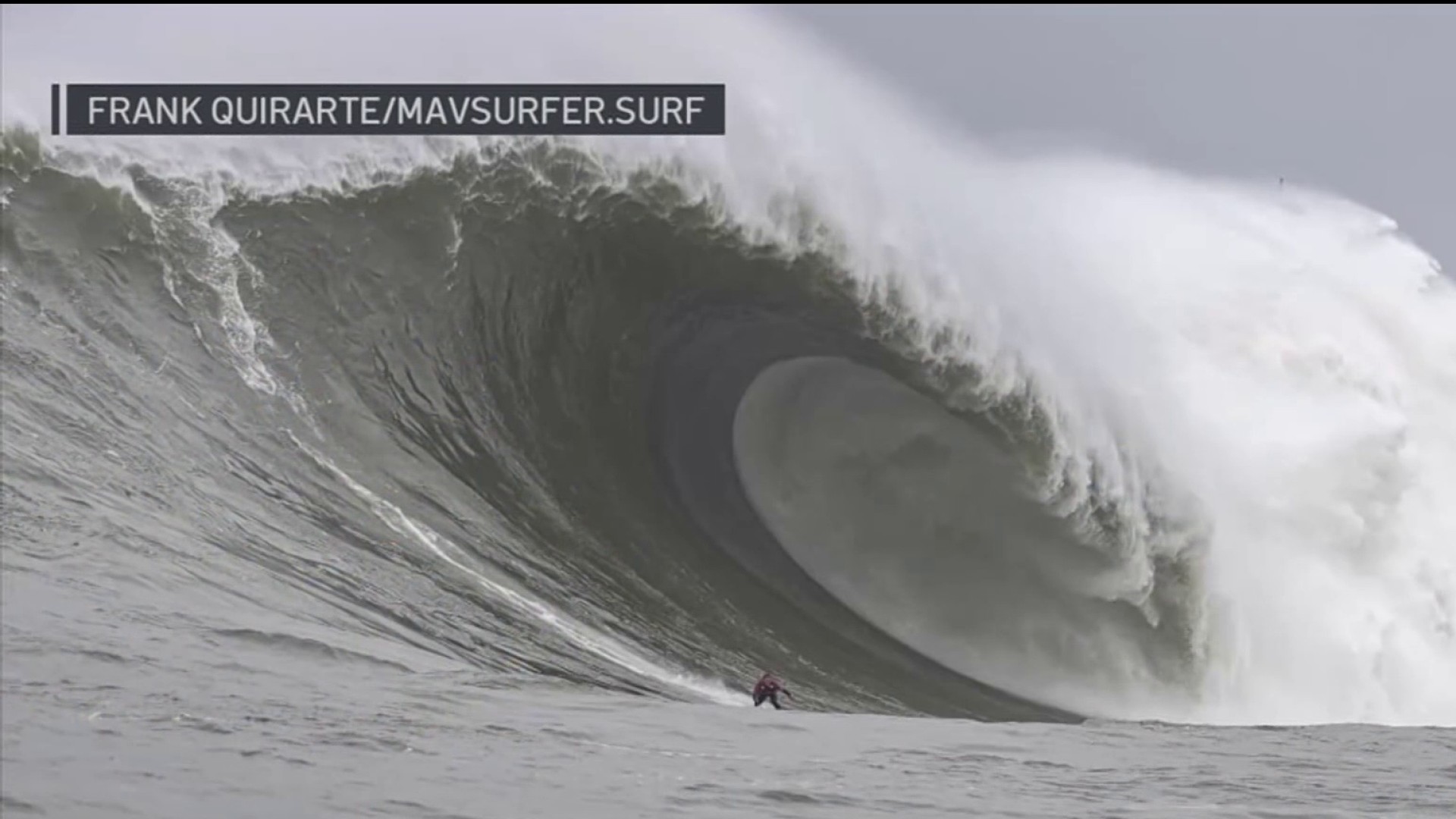
A beach bordering two Southern California counties reopened Monday with some restrictions as parts of the state slowly reopened public spaces and businesses.
Seal Beach in northern Orange County allowed running, walking and surfing starting at sunrise.
“The beaches are open and so far there have been no issues at all,” said police Sgt. Nick Nicholas, who added that officers and lifeguards would be patrolling to make sure people follow the rules.
Seal Beach emphasized its age demographic in a May 1 letter asking Gov. Gavin Newsom to approve a beach reopening plan that only allows active users Mondays through Thursdays, with weekends still off-limits.
“In total, seniors account for over 40% of the city’s population,” the letter said. “We are aware of our responsibility to ensure our at-risk population is protected and have thus far taken every necessary step to do so.”
Next door, Long Beach reopened bike and pedestrian paths along its beach but the sand remained off-limits like the rest of the beaches along Los Angeles County.
They could reopen as early as Wednesday with restrictions.
California
Los Angeles County permitted the reopening of some hiking spots and golf courses over the weekend, but with rules that people must stay 6 feet apart. The city of Los Angeles reopened some its popular destinations, including Griffith Park, which includes popular paths to the Hollywood sign.
Mounted police and park rangers kept hikers to small, distant groups wearing face coverings. Mayor Eric Garcetti urged “good judgment” and said the city would rely on education and encouragement rather than heavy-handed enforcement.
Los Angeles County, the state’s largest with 10 million residents, has more than half California’s roughly 2,700 virus deaths and has seen dozens of new deaths daily. Public Health Director Barbara Ferrer acknowledged the risk that easing restrictions could lead to a new spike in infections.
“There is a lot at stake,” Ferrer said. “Reopening our county, even slowly, only works if we’re all really committed to being careful.”
For most people, the coronavirus causes mild or moderate symptoms, such as fever and cough that clear up in two to three weeks. For some, especially older adults and people with existing health problems, it can cause more severe illness, including pneumonia, and death.
But pressure has been building to reopen the state. More than 4 million people statewide have filed for unemployment benefits. The California Department of Finance is projecting an unemployment rate of 18%, or 46% higher than the peak of the Great Recession a decade ago.
On Friday, Democratic Gov. Gavin Newsom eased the order and said roughly 70% of the state’s businesses can open with restrictions. Over the weekend, shoppers began visiting bookstores, as well as stores for jewelry, toys, clothing, shoes, home supplies and furnishing, sporting goods, antiques and music. People can’t browse but must pick up purchases curbside.
While San Francisco and six Bay Area counties have said they won’t ease their own retail restrictions for another week or longer, nearly two dozen counties — many of them small, rural populations with few coronavirus cases — want to move faster than called for under Newsom’s four-phase reopening plan.
Newsom said the state will allow that under strict criteria based on the number of cases, deaths and tests.
But the state also sent a stern warning to three Northern California counties that have been defying his orders. Leaders in Yuba, Sutter and Modoc counties have allowed businesses to reopen outside the scope of Newsom’s plan. On Friday, California’s Office of Emergency Services told the counties they could lose federal disaster aid if they continued ignoring the governor’s order.
Sutter County officials voted Saturday to tell the state the public health officer for the two counties attests they meet state criteria for broader reopening.
California is now in stage two of Newsom’s four-phase process. He provided a glimmer of hope Friday that phase three, which would allow reopening of such businesses as nail salons, isn’t far off. That phase would also allow for the reopening of churches, movie theaters and some hospitality services.
To move more quickly to reopen restaurants, malls, office buildings, childcare facilities and services such as car washes and pet grooming, counties must demonstrate they have had zero deaths and just one case per 10,000 residents during a two-week stretch, as well as robust testing and tracing and an ability to house up to 15% of the homeless.



